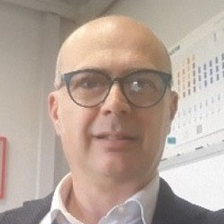Advances in the Use of Green Technologies in Various Areas
A special issue of Materials (ISSN 1996-1944). This special issue belongs to the section "Green Materials".
Deadline for manuscript submissions: closed (20 May 2022) | Viewed by 23522
Special Issue Editors
Interests: polymer; functional materials; composite; interfacial adhesion; shape memory behavior; mechanical application
Special Issues, Collections and Topics in MDPI journals
Interests: materials; polymers; thermal properties; nanocomposites; composites
Special Issues, Collections and Topics in MDPI journals
Special Issue Information
Dear Colleagues,
Green technologies have recently become increasingly attractive to researchers, engineers, manufacturers, materials scientists, chemical engineers, and environmental scientists working in various areas. This Special Issue will covers advances in green technologies starting from basic topics, such as in the areas of waste reduction and utilization, leading to the advanced field of green manufacturing and products. Green technologies not only save energy but also minimize energy consumption with sustainable manufacturing of products in the construction industries – from the basic technology of red mud bricks with advanced porous thermal insulators of geopolymer bricks with modern technologies and ideas. Within the scope of this SI is the category of materials with green manufacturing and applications, considering that the attention toward minimizing energy consumption while factoring in environmental concerns and efficiency in manufacturing green technology will be a key issue in various areas from ceramics toward composites, with emphasis on the area of the biocomposites. Topics to be covered will include design and manufacturing processes, renewable energy, ecofriendly materials and structures, energy saving, waste reduction and utilization, and environmental management and policy within the scope of green technologies, manufacturing, and applications.
Dr. Sneha Samal
Prof. Dr. Ignazio Blanco
Guest Editors
Manuscript Submission Information
Manuscripts should be submitted online at www.mdpi.com by registering and logging in to this website. Once you are registered, click here to go to the submission form. Manuscripts can be submitted until the deadline. All submissions that pass pre-check are peer-reviewed. Accepted papers will be published continuously in the journal (as soon as accepted) and will be listed together on the special issue website. Research articles, review articles as well as short communications are invited. For planned papers, a title and short abstract (about 100 words) can be sent to the Editorial Office for announcement on this website.
Submitted manuscripts should not have been published previously, nor be under consideration for publication elsewhere (except conference proceedings papers). All manuscripts are thoroughly refereed through a single-blind peer-review process. A guide for authors and other relevant information for submission of manuscripts is available on the Instructions for Authors page. Materials is an international peer-reviewed open access semimonthly journal published by MDPI.
Please visit the Instructions for Authors page before submitting a manuscript. The Article Processing Charge (APC) for publication in this open access journal is 2600 CHF (Swiss Francs). Submitted papers should be well formatted and use good English. Authors may use MDPI's English editing service prior to publication or during author revisions.
Keywords
- green technologies
- waste reduction and utilization
- new energy-saving technologies
- energy consumption
- alternative sustainable materials
- sustainable manufacturing







